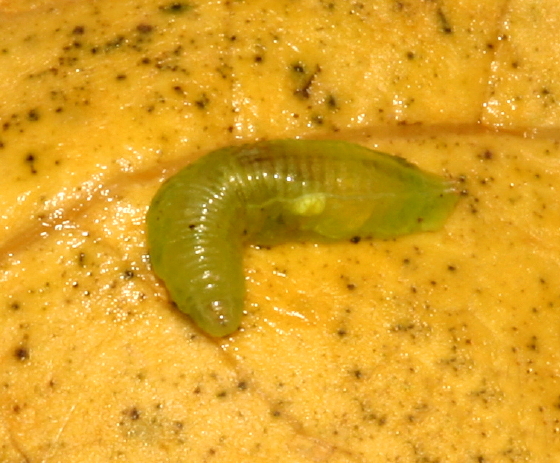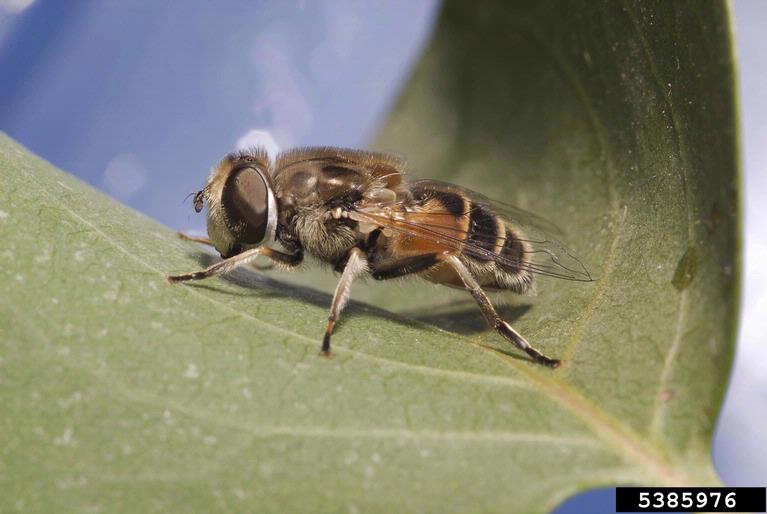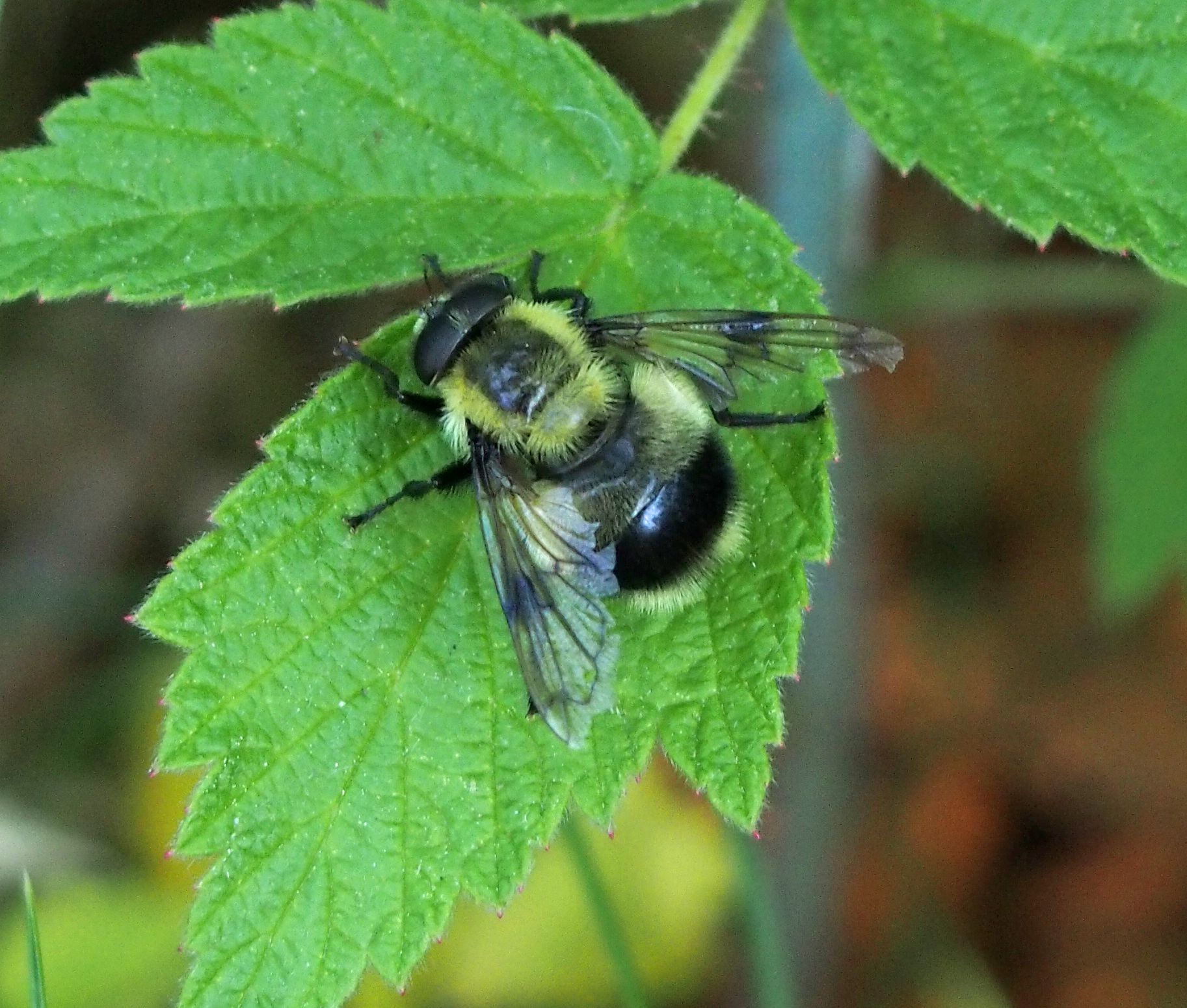Michigan insects in the garden – Week 8: Syrphid flies
Syrphid flies are the hummingbirds of the fly world.

Flies receive a bad reputation. The most well-known fly species draw blood from humans or lay eggs in berries and rotting fruits. However, flies do more than create a nuisance. This week’s Michigan insects in the garden profiles another beneficial fly family, Syrphidae. Species in this family visit flowers and are expert mimics of stinging insects.
Flower flies
The hovering flight pattern, abdomen wagging and flattened black and yellow abdomens are unique to Toxomerus (Photo 1). Adults visit flowers, collect nectar and lay eggs on plant leaves. In the summer months, tens or hundreds of flower flies will be active in the garden. In a study of Chicago, Illinois, residential gardens, almost 25% of flower-visiting insects were Toxomerus. This group of flies exists across many environments—urban areas, swamps, forests and agriculture, and Toxomerus are almost certainly in your garden, too. Insects in a closely related genus of flower flies, Syrphus, have similar behaviors but are slightly wider and longer.
Flower flies do not sting and are harmless to garden plants. In fact, they are beneficial at two life stages. As larvae (Photo 2), flower flies use a sucking mouthpart to feed on aphids and other small bodied pests that damage garden plants. A single larva can consume up to 400 aphids. As adults, flower flies visit flowers in search of nectar and pollen. However, the lack of branched hairs on flower flies’ bodies makes them less effective pollinators compared to bees. Short tongue length also prevents flower flies from accessing nectar in long tubular flowers.

Several species of hoverflies occur in Michigan. Identifying them can be a challenge in flight, as these fast fliers do not make it easy to readily distinguish between abdomen color patterns and size. If you are up to the task of identifying this rapid flier to the species level, i-Naturalist profiles the three most common Toxomerus species in the Eastern USA. Multiple generations of flower flies occur each season. During the final generation, the larva pupates and remains inactive in plant debris or the soil until the following June or July.
Notable mimics of bees and wasps
Other Syrphids are realistic mimics of wasps, bumble bees and honey bees. These similarities in appearance, called mimicry, are a defense mechanism to fool predatory insects or birds into thinking that a fly would be harmful and could sting. Michigan State University Extension has an excellent resource that characterizes the features, such as number of wings and antennae length, used to distinguish flies from bees.
Eristalis tenax, the drone fly, has a hairy body and an orange abdomen that may confuse a gardener into thinking it is a honey bee. A closer look would reveal the absence of a second pair of wings and short antennae in this mimic (Photo 3). Drone fly larvae live in moist areas and tolerate degraded sites including drainage ditches and sewage. Like the Bombyliidae profiled a few weeks ago, Syrphids also include mimics of honey bees, down to the variable coloration on each abdominal segment (Photo 4).


An insect that pollinates and attacks garden pests is a rare treat amidst the many species that want to munch on garden plants. Flower flies are found statewide in Michigan. Finding many in the garden is an indication that you may need less chemical inputs to manage small-bodied insect pests. They may not be as good of a pollinator as a bee, but they should be a welcome addition to the yard of any Michigan gardener.



 Print
Print Email
Email





